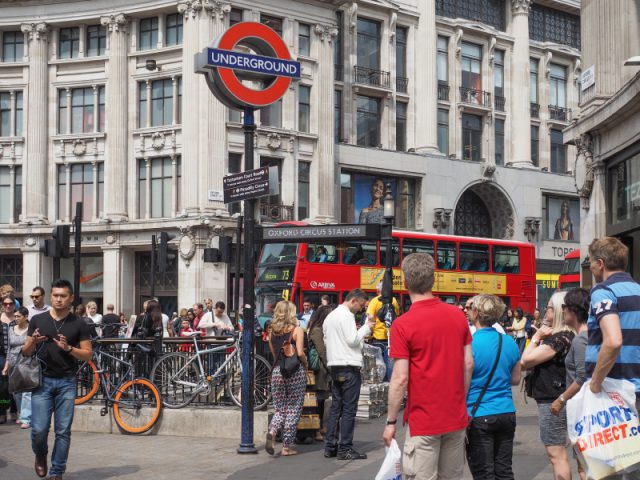The private rental sector continues to be a vital part of the housing market, becoming the most prevalent tenure in London over the past couple of years, according to the Government’s latest English Housing Survey, for 2016-17.
The report also reveals that owner-occupation rates remain unchanged for the fourth year in a row. Of the estimated 23.1m households in England, 14.4m (63%) were owner-occupiers in 2016-17. The proportion of households in owner-occupation increased steadily from the 1980s to 2003, when it reached a peak of 71%. Since then, owner-occupation gradually decreased to its current level. However, the rate of owner-occupation has not changed since 2013-14.
While the overall rate of owner-occupation has not changed in recent years, the composition of the group has; there are more outright owners, while the proportion of those buying with a mortgage is down.
In 2016-17, 34% of households were outright owners, while 28% were mortgagors. Since 2013-14, there have been more outright owners than mortgagors, and the proportion of mortgagors has dropped (from 31% in 2013-14 to 28% in 2016-17). The rise in the number and proportion of outright owners is at least partly explained by population ageing, with large numbers of baby boomers reaching retirement age, paying off their mortgages and moving into outright ownership.
The latest survey also points out the pronounced drop in the proportion of 25-34 and 35-44 year olds in owner-occupation over the last decade.
In 2006-07, about three quarters (72%) of those aged 35-44 were owner-occupiers. By 2016-17, this had fallen to half (52%). While owner-occupation remains the most prevalent tenure for this age group, there has been a considerable increase in the proportion of 35-44-year-olds in the private rental sector (11% to 29%). The proportion in the social rental sector did not change.
While under-35s have always been overrepresented in the private rental sector, over the past decade or so, the increase in the proportion of such households in the private rental sector has been particularly pronounced. In 2006-07, 27% of those aged 25-34 lived in the private rental sector. By 2016-17, this had risen by 46%. Over the same period, the proportion of 25-34-year-olds in owner-occupation decreased from 57% to 37%. In other words, households with a head occupier aged between 25-34 are more likely to be renting privately than buying their own homes – a continuation of a trend first identified in 2012-13. As with those aged 35-44, the proportion of 25-34-year-olds in the social rental sector did not change.
The private rental sector remained larger than the social rental sector in 2016-17, and is now the most prevalent tenure in London.

Private Rental Sector now most Prevalent Tenure in London
In the latest survey, the private rental sector accounted for 4.7m (20%) households. The social rental sector made up 3.9m (17%) households. There was no change in the size of either sector between 2015-16 and 2016-17.
In London, private renting was the most prevalent tenure (30%), followed by outright ownership (25%). A smaller proportion of households was buying with a mortgage (22%) or renting in the social sector (22%). Outside of London, outright ownership predominated (36%), followed by buying with a mortgage (30%), and renting in the private (19%) and social (16%) sectors.
The proportion of social renters who expect to buy has continued to rise, however. No such increase was observed among private tenants.
In 2016-17, 60% of private tenants (2.7m) and 30% of social renters (1.2m) stated that they expected to buy a property at some point in the future. Between 2015-16 and 2016-17, there was no change in the proportion of private tenants who expected to buy, however, the proportion of social renters who expected to buy rose from 27% to 30%.
Rates of overcrowding did not change in the 2016-17 survey, but remained higher in the rented sectors.
7% of households in the social rental sector (268,000) and 5% in the private rental sector (231,000) were living in overcrowded accommodation from 2016-17. Just 1% of owner-occupied households (183,000) were overcrowded.
Nevertheless, the energy efficiency of English homes has increased considerably in the last 20 years, but did not rise between 2015 and 2016. It will be interesting to see how this changes following the Government’s new Minimum Energy Efficiency Standards (MEES) for private rental homes, which are due to come into force from 1st April 2018.
The number of homes with working smoke and carbon monoxide alarms has also increased.
In 2016-17, 90% of households had at least one working smoke alarm – up from 89% in 2015-16 and 84% in 2008-09. The increase between 2008-09 and 2016-17 was observed across all tenures. The rise since 2015-16 was driven by a significant increase in the proportion of private tenants with a working smoke alarm, from 83% to 88%.
In 2016, 33% of all dwellings had a carbon monoxide alarm – up from 28% in 2015. Homes with a solid fuel burning appliance, such as a coal fire or wood burning stove, were more likely to have a carbon monoxide alarm than dwellings with no solid fuel appliance (37% compared with 32%).
Landlords, keep up to date with your responsibilities regarding smoke and carbon monoxide alarms with our free guide: https://landlordnews.co.uk/guides/a-landlords-guide-to-smoke-and-carbon-monoxide-alarms/
David Smith, the Policy Director of the Residential Landlords Association (RLA), responds to the survey: “Today’s findings reiterate the importance of the private rented sector for families across the country. Larger than the social sector, and housing more families with children, the private rented sector provides much needed housing for nearly 5m people.
“The Government needs to recognise its vital role in the housing market and implement pro-growth tax and planning policies, to support the majority of landlords who are individuals to meet ever growing demand for rented housing.”
The Director of tenant lobby group Generation Rent, Dan Wilson Craw, also comments: “While fewer Londoners can afford homeownership, outside the capital, the number of first time buyers is rising, approaching levels last seen before the crash. But these figures reveal that the majority can now only access homeownership by taking out a longer mortgage.
“If renting provided affordable, long-term homes, fewer people would feel so desperate to escape that they’d take on 30 or more years of debt in order to buy. The Government urgently needs to reform private tenancies to give more stability to renters’ lives.”
Russell Quirk, the Founder and CEO of online estate agent Emoov.co.uk, offers his thoughts: “A steady level of owner-occupation rates since 2013 suggests a certain degree of stability across the UK market, despite the number of tough obstacles it has faced in the last four years.
“However, the drastic drop in owner-occupancy rates for those aged between 25-44 and the decline of those with a mortgage compared to an ageing population now owning their property outright, demonstrates the tough task facing aspirational homebuyers and highlights the Government’s failure in helping them.”
He continues: “With interest rates still extremely low, the interest cost of a mortgage continues to remain manageable for many, but, as these figures show, it isn’t the cost of repaying the mortgage that is the issue, it’s the high barrier to securing it in the first place. This, coupled with a severe lack of suitable, affordable properties for first time buyers, will ensure this barrier remains until the Government actually delivers on building adequate numbers of homes.
“This is most prevalent in the capital, where changes to buy-to-let laws have failed to level the playing field and private rentals still account for the largest proportion of all tenures. As a result, many are resigned to a sector that is overcrowded and overinflated, and the Government’s lack of address means that they will no doubt be stuck renting for quite some time to come.”








